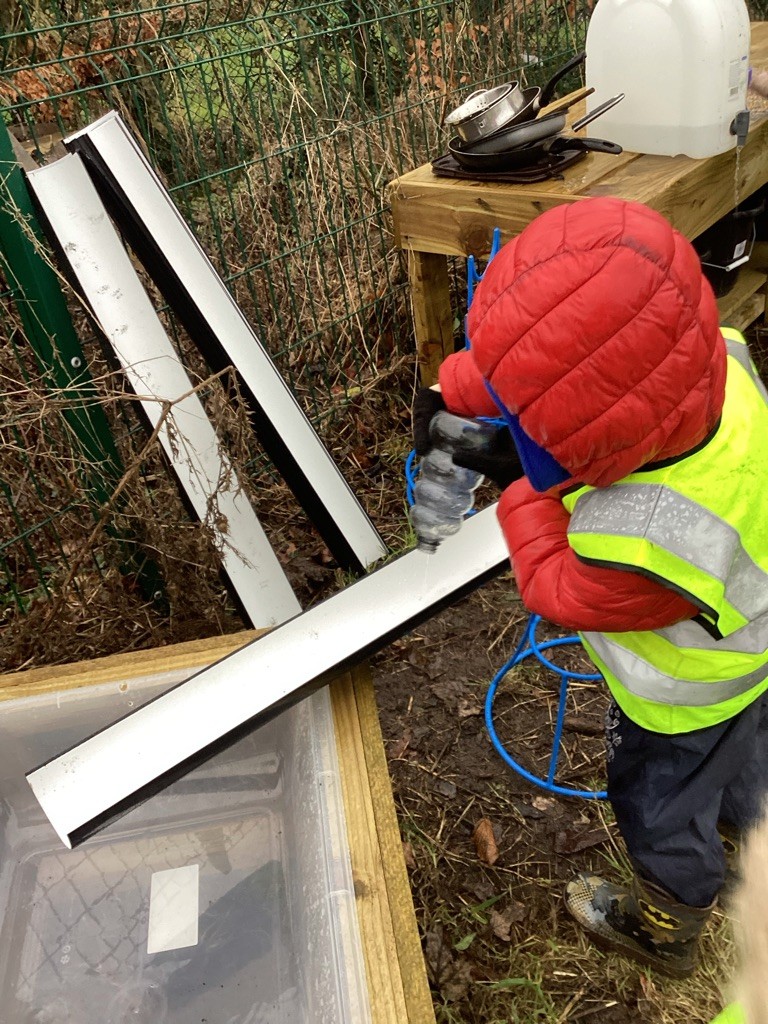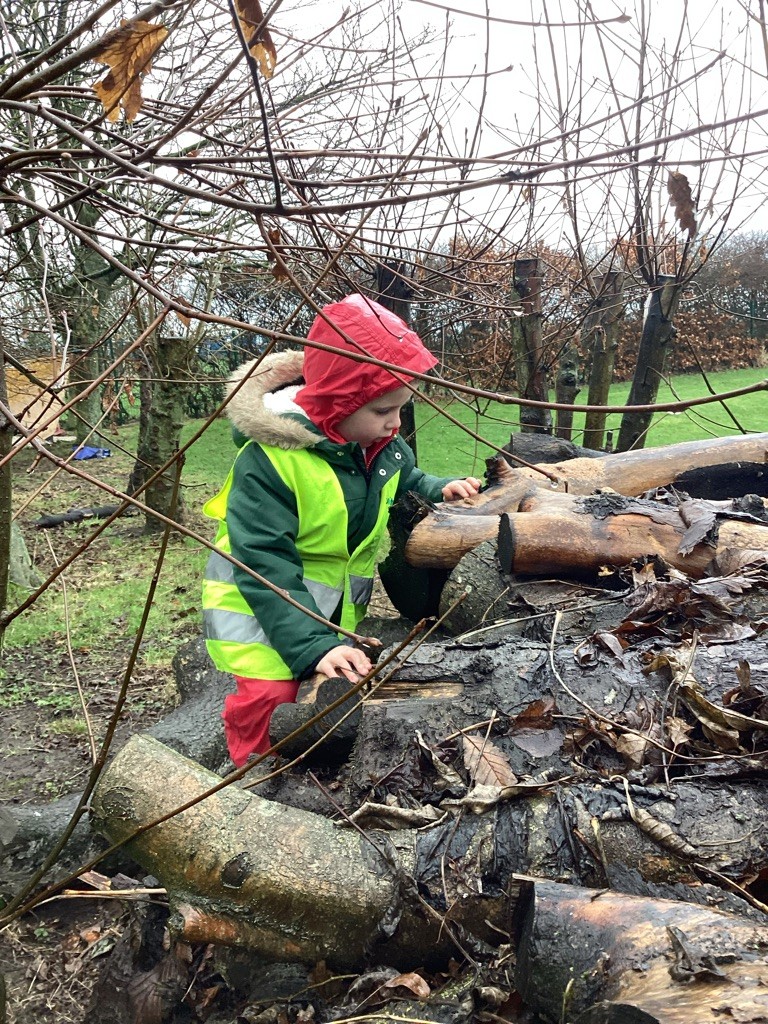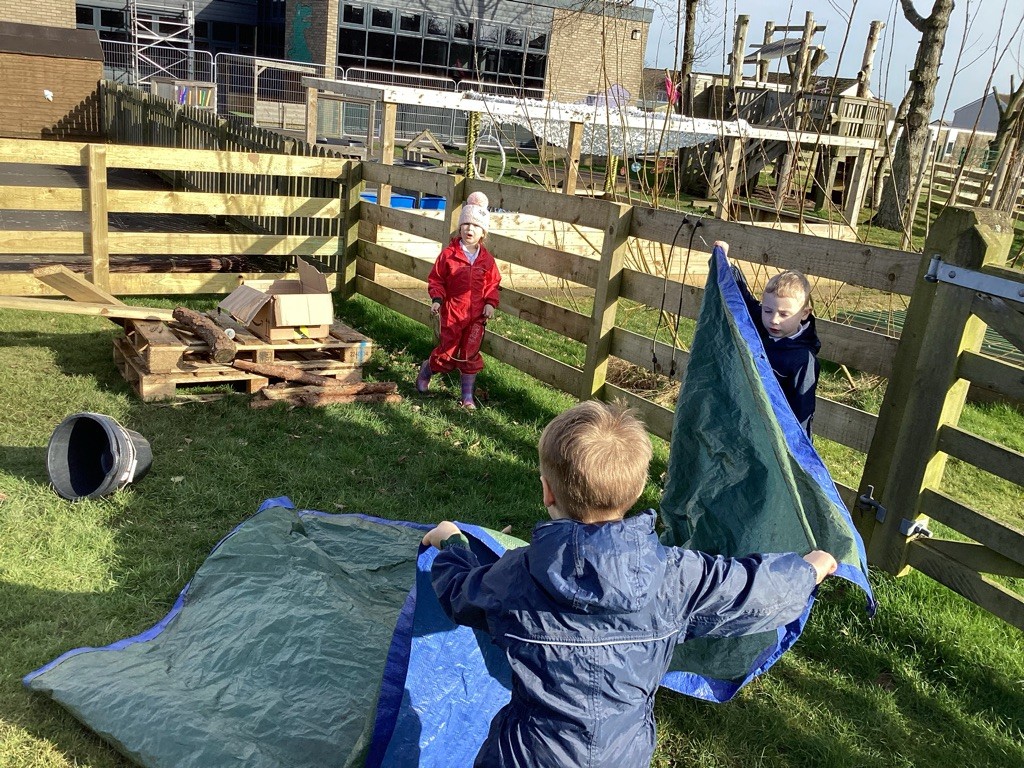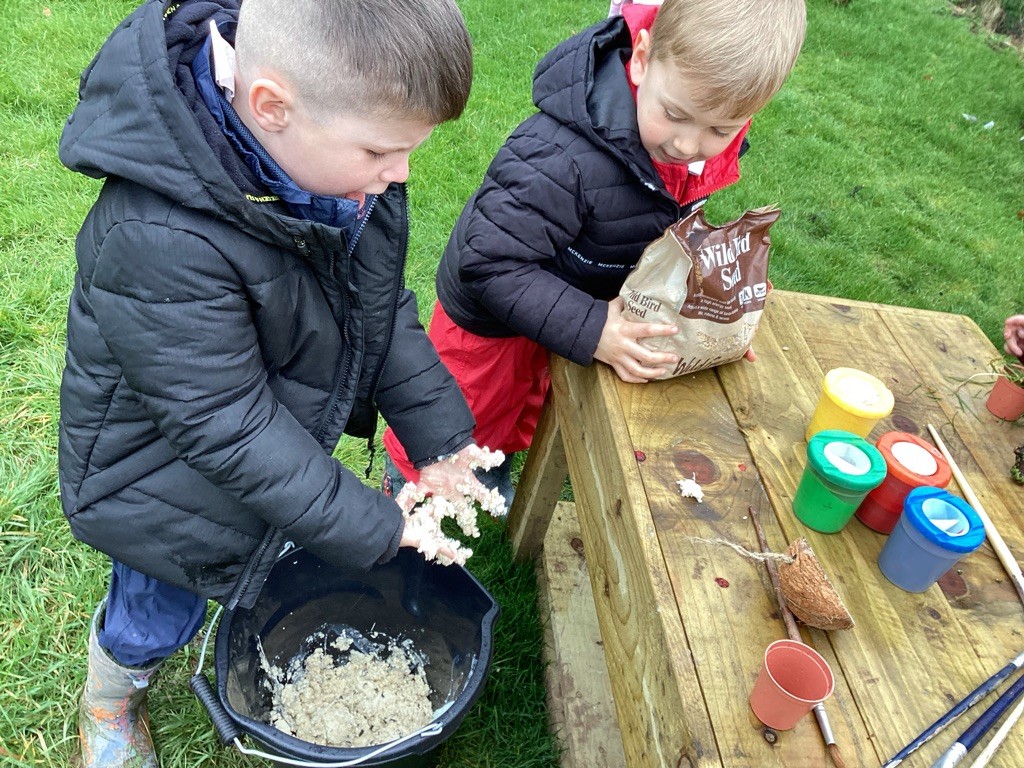How does Forest Schools support the National Curriculum and our children’s learning?
The sessions for all age groups are delivered within our forest school ethos, designed to provide lots of opportunities with a range of interactive activities. The children are able to use their imagination and make their own choices about what to do with their time in our outdoor space. On many occasions the children will bring their learning from the classroom to forest school, therefore the rangers ensure they are aware of these subjects/knowledge and in addition with the class teacher and or teaching assistant attending this helps to then extend their knowledge further in a more hands on way.
Also during our sessions you can witness:
LITERACY
Children will use a vast amount of vocabulary during their discussions with peers (especially when working in small groups if inventing a game or building a den) and to describe woodland objects and plants while they are investigating the space independently. All of the sessions use an abundance of speaking and listening throughout with key literacy skills of interesting vocabulary which then permeates to all areas of learning. All children throughout the sessions will share their experience and listen to others during reflection time at the end. There are books mainly about trees available for children to use.
SCIENCE
All classes thoroughly enjoy independently exploring the outside space and gain valuable experience of the season’s first hand! The outside space abounds with natural child led science lessons. Children can learn first-hand about biology, ecology, meteorology and much more. They can also gain knowledge about trees, plants and animals by developing personal understanding of life cycles, food webs, knowledge of weather systems, etc.
MATHS
Children like to use sticks to measure lengths, count and organise into height, width or weight order. Lots of counting can be used when they are making a potion or decorating a mud pot with a repeating pattern. They also enjoy weighing objects or water in our simple forest school scales. Older children have got immersed in an activity of measuring the circumference of a tree trunk and then use a certain calculation to work out the age of a tree. One rule of safety in forest school if moving large sticks for use “If it’s bigger than you (the child) you need 2, if it’s bigger than me (Grown up) you need 3 and if you’re not sure then maybe use 4!” children are then learning to visually judge this independently.
ART and DT
The Forest Schools curriculum gives all children the opportunities to cut wood and shape it safely using a range of tools. They will learn how to use a hand drill, peelers (beginners or preschool), knives (after year 1), bowsaw and loppers. They will also learn how to lash pieces of wood together and how and why we use different knots. All children like to build dens with tarp that is available, large sticks or sometimes a combination of both. This requires the skill of group work, imagination and lots of communication and discussion. Older children like to use the ropes and wood independently to make their own swings, ladders, bridges, pulleys and even zip wirers. Mud is a big factor in Forest school where children like to use our digging area to build bridges, make rivers, houses, water way, and make models! They also take mud to then mix with water to create paint! Some though just enjoy the feel it on their skin! There is always paper, coloured pens, crayons, glue, sellotape and scissors available to allow them to be creative however they wish. Some in the past have made a treasure map, some have used natural resources (mud, leaves etc) to make a picture of a tree or animal, some have made kites to fly, the list is endless.
GEOGRAPHY
There have been wipeable maps of the grounds of our schools for the children to complete as part of a mapping activity. This encourages our children to move about our outside space, think about where things are, how to draw them onto a map and thinking of their outside space from a different perspective. Also we have the journey stick which is how we introduce every child at our school to our fabulous outdoor space. This encourages movement around our outside space and to explore it in a fun way.
PSHE/P.E.
Children will nurture a deeper bond with nature and consider how much joy and calm it brings us. Also how we in turn should respect and look after our outside space which links in to our planet. They are able to develop their physical fitness, cardiovascular strength, stamina, gross motor skills, fine motor skills (when using tools) and balance as they hike, climb, jump and run about. Mud is again a big part of this area as it develops their sensory skills, immunity and creativity.






